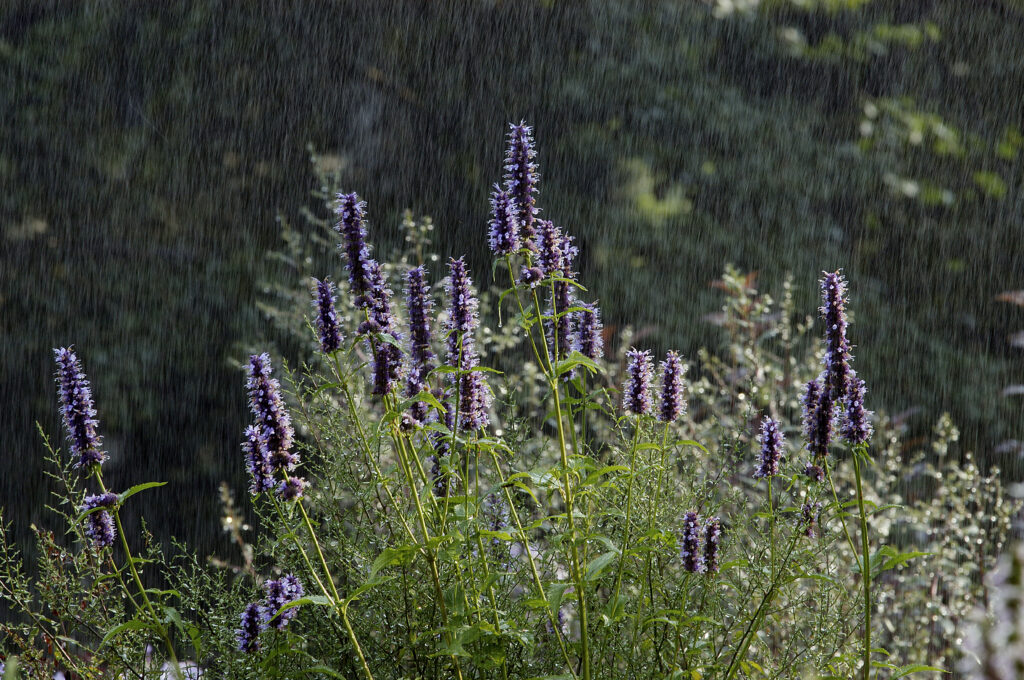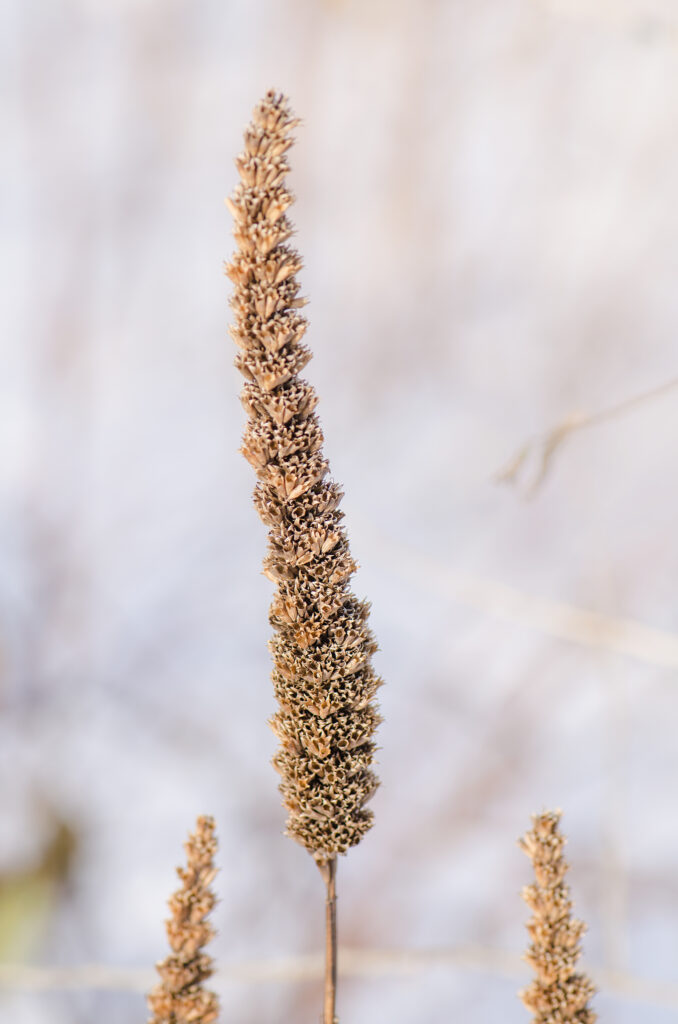Anise Hyssop, known botanically as Agastache foeniculum, is one of those enchanting plants that has always caught my eye in the garden. It stands there like a gentle giant, with its sturdy square stems and charming lavender-blue blooms that seem to gently sway with every breeze. There’s something so delightfully inviting about its presence—it beckons like an old friend whom you can’t help but smile at when you see them.



This perennial herb, native to North American soils, has been cherished for centuries, not just for its beauty but for its prescriptive gifts as well. Its strong licorice-like aroma is more than just olfactory indulgence; it’s a clue to the volatile oils it holds within, each bearing its own array of health benefits. Every time I crush a leaf between my fingers, the fragrant anise scent that fills the air reminds me of the seamless bond between art and functionality that nature so finely balances.
Anise Hyssop has an unmistakable way of brightening the garden with not only its color but its delightful fragrance, creating a sensory symphony that has a calming effect even after the most frantic of days. The scent, so reminiscent of licorice, comes from the presence of compounds like anethole—a fascinating component also found in other licorice-flavored plants such as star anise and fennel. Anethole brings with it remarkable properties, from being antimicrobial and antioxidant to boasting anti-inflammatory effects. It’s a revelation, really, how such a sweet-smelling compound can harbor so much potential for supporting our well-being, especially in the realm of respiratory health.
In those times when my breaths feel shallow, or when a cough stubbornly hangs on, I find comfort in the soothing embrace of Anise Hyssop. Its expectorant qualities make it an ally against congestion, helping to clear the airways and easing the burden on my lungs. Just knowing that its essence, those charming aromatic compounds, can so effectively open the bronchial passages—it’s as if it gently coaxes my body to relax and breathe more deeply. For years, this herb has been trusted to help calm respiratory inflammation, a nod to its long history of providing relief where it is needed most.
What continues to fascinate me about Anise Hyssop is its ability to seamlessly traverse the boundary between culinary delight and medicinal remedy. The very qualities that make it a favored addition to teas and even desserts—the flavorful hints of licorice—are the same ones that contribute to its healthful properties. It’s as if every cup of tea made with its leaves becomes an opportunity do double duty: pleasing the palate and supporting the body’s internal harmony.
But the magic of Anise Hyssop doesn’t stop at respiratory care. I’m continually intrigued by the role it plays in digestive health. The very same anethole component calms upset stomachs, reduces bloating, and guards against those little disturbances that sometimes arise after a meal. Whenever I feel digestive unease making itself at home, a simple brew of Anise Hyssop tea often restores the balance, soothing discomfort and helping my system find its rhythm again. The presence of other compounds, like fenchone and estragole, also amplify its carminative properties, helping to ease gas and ensuring that my digestive journey remains smooth and uneventful.
There have been countless times when I’ve paused during my garden tending, bemused by the sheer resilience and beauty of Anise Hyssop. Its vibrant greenery and contrasting purple blooms never fail to draw in pollinators, like bees and butterflies, who are just as enchanted by its charms as I am. As they dance lazily from flower to flower, the garden comes alive with a quiet sort of joy—a reminder that the earth has its own gentle cadence, one that we do well to heed.
There’s an undeniable allure to growing Anise Hyssop in my garden. The decision to add it to my world was effortless, given how little it demands in return. Planting it is simple—find a sunny, well-drained spot, and it’s ready to grow. It even tolerates less-than-ideal conditions, standing tall and happy even if the soil isn’t as rich as a horticulturist might hope for. Once established, it requires little more than basic care, taking what the world throws at it with a breezy tenacity.
In its growth, Anise Hyssop exemplifies nature’s patience and generosity. Regular pruning is a vital, if simple, task that not only keeps this hardy plant in check but encourages more vigorous blossoming as well. Its ability to thrive even at the edges of neglect is a quiet encouragement I keep with me—an assurance that amidst life’s chaos, beauty finds a way to endure and even flourish.
More than just a thoughtful presence in the garden, Anise Hyssop has historical weight behind its soft exterior. Its use echoes throughout time as a plant of protection and purification, revered not only for its therapeutic gifts but for its symbolic meaning as well. In various cultures, it has been enlisted as both culinary herb and medicinal miracle, entrusted to alleviate the burdens of a wheezing chest or unsettled stomach. The careful dance of its sweet fragrance and enduring popularity in herbal remedies speaks to the interwoven history of humans with plants, an ongoing journey that has brought both conscious comfort and subtle healing to many.
As I think of how Anise Hyssop fits into the larger picture, the impact it has on our microbiome comes into focus. This charming garden plant adds more than just aesthetic appeal—it finds a way to weave itself into the story of our guttural health. The antimicrobial properties inherent in its compounds do wonders in keeping the balance of beneficial microbes intact while thwarting their harmful counterparts. Lactobacillus and Bifidobacterium, two friendlies of the microbiome, find in Anise Hyssop an environment that helps them thrive, establishing a gut community that works symbiotically towards our well-being.
Brewing a warm cup of Anise Hyssop tea becomes not just a leisurely act but a story of interconnected ecosystems—where the delightful herb oil does more than merely freshen breath and brighten appetite. It has a subtle way of playing host to a festival inside our bodies, inviting beneficial microbes in while preventing the unruly ones from crashing the party. In the intricate dance of digestion and the symbiotic embrace of flora and fauna, Anise Hyssop becomes a silent ally and trusted friend.
But there’s the undeniable pleasure that comes from the simple joys of gardening itself, in nurturing a plot of earth, embedding a tiny seed only to witness it grow into a lush green sentinel of serenity. Witnessing Anise Hyssop transform from seed to full bloom becomes an exercise in patience and an acknowledgment of life’s rhythms—both in the haste of the world and in our own reflective hearts.
In honor of this perennial beauty and with a nod to its sensory delights, I share a cherished recipe that merges its fragrant leaves with one of summer’s sweetest pleasures: Strawberry Anise Hyssop Jelly. To make this delectable creation, you’ll need about 4 pounds of fresh strawberries, washed and trimmed. Add to this the delightful aroma of 12 to 14 large (or 24 to 30 small) Anise Hyssop leaves that have been sliced into a chiffonade. Alongside these, you’ll need 1 cup of smooth, golden honey and 1/4 cup fresh lemon juice to give the jelly a scrumptious tart edge.
Begin by combining the sugar and hyssop leaves with the strawberries in a large pot. As it all simmers gently, mash the fruit to release their thick juices and let the mixture come alive with the blended fragrances. While this mixture cooks, the strawberries start to break down and their joyful sweetness intermingles with the fresh, radiant notes of the hyssop. The way these flavors meld has always seemed like a celebration in itself—where summer takes center stage, refusing to be anything but delightful.
Let the mixture gently bubble, stirring it intermittently with the rhythm of old clockwork. Once fully simmered, strain out the cooked solids and return just the clear, glistening liquid to the pot to reduce further. This step crafts that ideal jelly consistency, shaping a delight that has firmly claimed its spot in my list of indulgent pleasures.
Enjoy the jelly on warm toast, or dolloped gently onto a favorite scone with a side of clotted cream. Each spoonful becomes a burst of flavor that combines the essence of summer strawberries with the gentle, sophisticated aroma of Anise Hyssop. It becomes more than just a fruit preserve—this jelly is a testament to simple pleasures, a taste of the delicate dance between nature and care, a gentle reminder that life can be both savory and sweet, all at once.
Anise Hyssop, in its humble guise, reveals itself as more than a bearer of blossoms or licorice-sweet leaves. It’s a botanical celebration of resilience and an aromatic testament to our intrinsic connection with the land. With every fragrant leaf I brush against, with each sip of its flavorful tea, Anise Hyssop continues to strengthen the cherished bond between my heart and the tender grace of nature’s embrace. The journey with Anise Hyssop—through the garden, onto the plate, into the soul—is my reminder that life’s rhythms, though sometimes unpredictable, are ever sweeping us up into nature’s ever-turning wheel.




